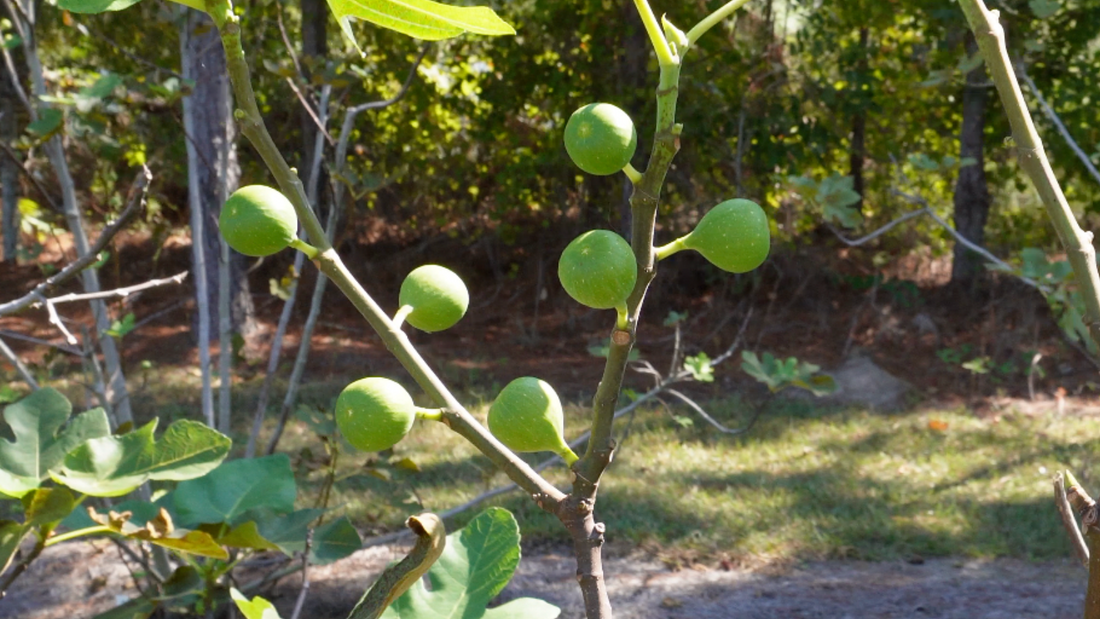We haven't always been avid fig pruners, but over the past few years we have seen all the wondrous benefits of pruning fig trees. Whether you have a one year old fig tree or a 25 year old fig tree, pruning every year is a great idea! Below we'll discuss some different reasons and tactics for pruning fig trees, small and large.
Why Prune Fig Trees?
1. Promoting More New Growth
As we've discussed on other blogs, pruning encourages a fig tree to produce more "new growth" the following year. Since the main crop of figs is produced on this new growth (and not on old growth), we want to promote as much new growth as possible. The more new growth we can get, the more figs we'll harvest!
Many new fig tree growers don't want to cut their trees because they want to preserve all the growth that they've worked hard to get. But pruning the trees will give you even more growth. At each place you cut, you'll get 3-4 new limbs forming the following year with vigorous growth and more figs.

2. Encouraging Branching
Every fig variety grows a little different. Some will naturally branch very well in the first couple years, while others tend to grow straight up without many side branches. The more branches you have, the more opportunities you have for new growth and larger harvests.
We have seen this first hand with the Mary Lane fig trees in our orchard. This variety grows fast and tall in the first few years after planting in the ground, but it doesn't branch much. As a result, we started to notice our production on these trees declining a little in the last couple years.
Last year, we pruned a couple of the Mary Lane fig trees heavily and did not prune the other two. We wanted to have a nice side by side comparison to see the differences in new growth and production. The results were amazing! We got significantly more growth and figs on the trees that we pruned to promote more branches.

3. Rejuvenation Pruning
This concept is relatively new to me, but I've seen it work. In some cases a small fig tree planted in the ground just doesn't want to grow. I've had a few over the years that just sit there and remain 1-2' tall for a couple years.
This doesn't appear to be a variety-specific issue. I always plant two trees of each variety and sometimes one just doesn't grow as fast as the other. I'm not sure of the plant physiology behind this phenomenon, but the fix is pretty easy.
Many times you can rejuvenate these slow-growing trees with a heavy pruning. Some growers will suggest cutting them back to the ground, while others will recommend leaving a few inches of growth above the ground. After doing this in the winter months, you'll be surprised at how the tree starts to finally grow.
How Much Do You Prune a Fig Tree?
Fig trees are tough and it's almost impossible to prune a fig tree too much. So don't be too worried about cutting too much because the tree will always give you a significant amount of new growth each year.
For young trees that were planted in our orchard the past year, we mainly just cut the tips on these. These young trees usually will have a single trunk or a single trunk with a couple suckers. Just take your pruners and cut a few inches off the top to promote more branching the following year. This technique is a great way to stimulate fig production in young trees.

For older fig trees in our orchard, our goal is to keep the trees more manageable. We have our fig trees in rows with grass lanes between the rows. I don't like the limbs of the fig trees hitting me while I'm mowing those lanes between rows, so I prune to keep the trees better contained along the rows.
Unless a tree has started to sprawl and gotten unruly, I rarely cut large portions of the trunk or larger, older branches. I mainly cut the new growth so that we can get more branches from each spot we cut. There's no one-size-fits-all way to prune an older fig tree, but I can promise you that you won't hurt it by pruning it aggressively.

